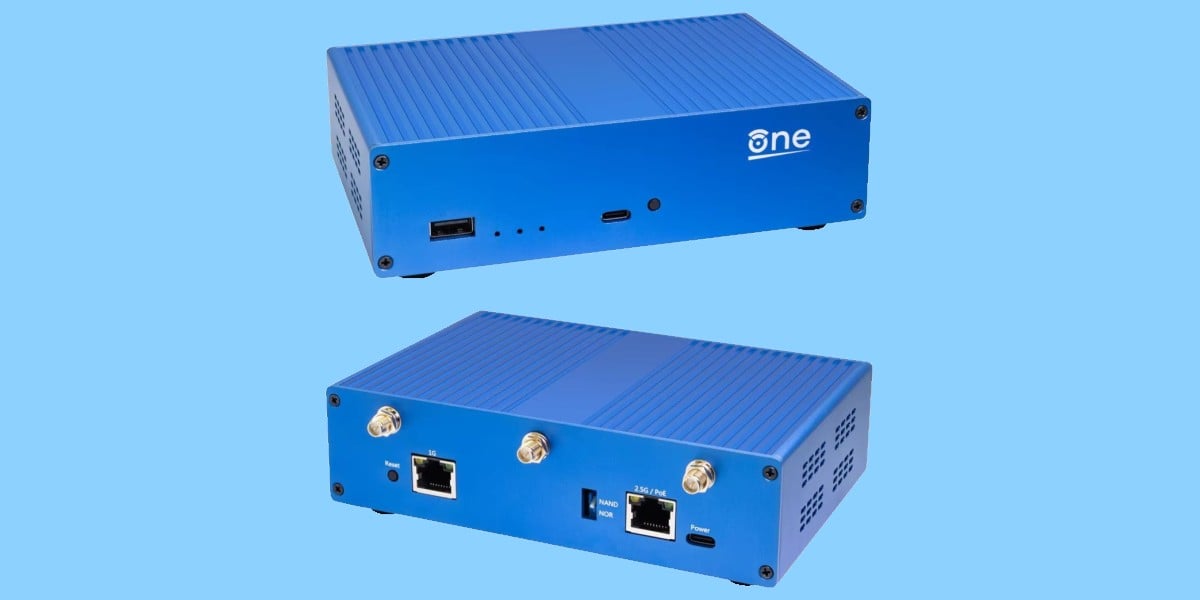I love the specs and the pricing. Will definitely check it out.
Is it available only though aliexpress?
It would be nice if they would make one with 4 or more LAN ports with at least one of them 2.5G and no WiFi. I need multiple access points to get enough coverage. The built in WiFi is useless to me since it won’t integrate nicely with Unifi.
Turn it off then and use your own APs, it’s what I do in my home. I don’t have this specific router but I have a box with 2 eth ports, one goes to pppoe and the other to my home switch, where my APs are connected.
You can hook it to a switch and a Wireless AP… Now your networking is modular.
I’m not sold.
Only two Ethernet ports. No SFP. Only available on AliExpress. Dishonestly marketed as the “first router designed specifically for OpenWRT”.
Perhaps they are the first to make a router for OpenWRT the FOSS project, but certainly not the first to make one specifically for compatibility with the OpenWRT the Linux-based OS.
CZ.NIC (Czech Republic) makes several fully open-source routers under the “Turris” brand that run their own open-source variant of OpenWRT called “Turris OS”. It’s basically just an Open-WRT based distro with a custom frontend + root ssh and LuCI, and you can go vanilla if you want to.
GL.iNet (China) makes dozens of routers all designed for OpenWRT. They come standard with a custom install that includes a custom frontend and a handful of integrations, but you’ve gotta root ssh and LuCI, and you can go vanilla.
There are probably more out there. I think GlobalScale makes a few also, once on Kickstarter.
This is link to CZ.NIC’s Turris offerings.
They ship to “many countries” besides Czech republic, according to their page.
The router itself is quite expensive at around 400 euros for the wifi model.
In case it is not obvious, they are primarily Czech domain registrar.
There are use cases for this router, but please don’t get the plastic clone sold by the same Chinese company that assembles the real thing. (The plastic clone costs a third, but doesn’t have detachable antennas and doesn’t accept mainstream OpenWRT because it uses an almost unknown CPU.)
Myself, when I need a high capability router (for me “capability” typically means “range”) I turn towards a Raspberry Pi and Alfa AWUS1900 wireless card. Yes, it lacks in throughput (USB is a severe bottleneck)… but with a bit of tweaking, you can talk out to 2 kilometers if terrain allows. :)
Isn’t RAM like the biggest bottleneck in routers causing bufferblaot and packet loss?
How does the article not mention how much RAM this device has?
Packet loss occurs when a router has to drop some packets because the buffer to store them is running out because the link where they are supposed to go is overloaded.
Bufferbloat is the issue where you make your queues too deep, i.e. you allocate too much RAM to buffering, while the cause of the buffering still exists, so the deeper queue just fills up anyway, so you haven’t improved anything, and have induced extra latency on the packets that do make it trough.
Deep buffers can help in situations where you have a step down in link speed, but only bursty and not sustained overloading of the slower output link.
The big bottleneck in router hardware is more about TCAM or HBM memory used to store the FIB of the global routing table. Since the table has grown so much the devices with less high speed memory can’t hold the table anymore, and if they start swapping the FIB to normal memory your routing performance goes to shit.
So not all of your concerns seem to apply to this class of device, but of course you’re right, The Register should have mentioned the RAM.
Where do I find TCAM and HBM specs?
Wait, is this why packet shapers limiting bandwidth on one guest vlan drop so many damn packets? How do you prevent this?
Thanks. You know a lot about hardware spec reqs in networking equipment. It always drives me crazy when buying a router because they dont seem to list this info.
Do you have any general advice for spec’ing hardware reqs for small businesses with event spaces with occasionally loads of people? How do u ensure the router can handle everyone’s traffic without dropping packets?
I’m glad it’s open hardware as much as open software, but I think I’ll wait to see what the OpenWrt Two looks like.
I’m fine with the looks and hardware, except I’m not upgrading again for a wifi 6 router. I’ll wait till they make a 7. 7 has a couple pretty big improvements over 6.
I was thinking the same thing, because I want either Wi-Fi 6E or Wi-Fi 7, as I currently have Wi-Fi 5, and it works well enough.
https://lemmy.world/post/22632752?scrollToComments=true
This discussion is still on the front page
If only it were a useful hardware configuration.
It’s $90 and for if you want a wifi router. What are you missing?
I would need the WiFi and a 5 port integrated switch (won’t refuse 8 either), and then I’d buy 3 or 4 of them immediately.
Switches are like $15, dude.
…and I knew that already when I wrote what I need.
Ever think before you post?
Yeah this doesn’t hold up against the $200+ options but it’s also not priced that way.
deleted by creator
This is cool
Of course, I just bought a new router, your all welcome
Thank you for your sacrifice.
Which router did you go for, by the way?
deleted by creator
I still don’t understand why this isn’t a 2.5G WAN and 2.5G LAN. Is it assuming that people are going to be using it as a router on a stick with a 1G WAN?
You want your $90 wi-fi router to do what now?
most likely because this device is mainly for wifi use, and/or limitation of the SoC.
I can’t tell if WAN is Wireless Area Network or Wide Area Network.
WAN = Wide Area Network
WLAN = Wireless Area Network*WLAN = Wireless local area network
*Wireless Local Area Network
Wide area network. It’s basically the “internet” side of the router.
I know what a Wide Area Network is. I’m just saying the acronym is ambiguous since the advent of WiFi
Not really. WAN has always been WAN. Wireless has always been WLAN.
lan is local area network
wan is wide area network
wlan is wireless local
wwan is wireless wan
Nerd here. You confuse me:
WAN is some up-/downstream port connecting intranets remotely in my novice book. The measurement G doesn’t refer to some advertisement-thingy in terms of wireless speed (but Gigabyte) - Maybe it’s some form of Generation; But then I lack everything including my false base knowledge. Additionally I have never encountered “2.5G LAN” ever before: Would you be able to shed light on my shortcomings? 2.5 x 8 is 20 Gbit. I didn’t read about that size yet.
Edit: Thanks guys!
I have never encountered “2.5G LAN” ever before
https://en.m.wikipedia.org/wiki/2.5GBASE-T_and_5GBASE-T
https://www.tp-link.com/se/business-networking/unmanaged-switch/tl-sg108-m2/
now you have ;)
WAN would be the Internet uplink port. A 2.5G WAN port is a 2.5 gigabit Ethernet port. 2.5 gigabit and o a lesser extent 5 gigabit Ethernet are a standard that’s becoming rapidly available on a lot of hardware. OP is stating that for a device shipping near the end of 2024, a new router that is shipping with only 1 GbE instead of 2.5 GbE is a problem.
Given the 2.5Gb port also supports PoE in, I think the idea is that you can plug this into a 2.5Gb PoE port on a seperate managed switch and that’s the only connection you need; that’s certainly how I would use it. WAN connections could be plugged into that switch, along with the APs, user devices, servers, etc, with them seperated using VLANs. Assuming everything was gigabit except for that 2.5Gb link to the OpenWRT Thing™, you’d be hard-pressed to saturate that 2.5Gb port and you’d still have the gigabit port completely free for… whatever.
So, how is this any better than the Router Mini PCs you can find in Aliexpress (random example)?
It’s Open source hardware too
Whilst that’s a nice slogan, in Electronics “open source” doesn’t mean anywhere as much as it does in Software because it’s generally just knowing which components go into the circuit, which is but a fraction of the work (laying out the board is a massive chunk of work, in some cases most of it, and at high enough clock speeds circuit design is an art in itself).
Mind you, I like the Orange Pi and Banana Pi guys, and the idea of an SBC designed for being an open source router is pretty appealing, though nowadays maybe pfSense would be a better choice than OpenWrt.
Finally this thing having only 2 ethernet ports + WiFi makes it little more than a regular $70+ SBC board + a box - something easy enough to put together by any technically inclined person - which isn’t exactly exciting.
pfSense would be a better choice than OpenWrt
I heard pfSense had a hard time with wireless radios, and that’s where OpenWrt shines comparably. Is that not true?
Yes, FreeBSD doesn’t handle many wireless cards. Same applies to OPNsense, my preferred version.
Open hardware (by oshwa definition) would include the board layout
deleted by creator
Well it’s cheaper, so I’m not sure it’s going for “better”.
Most of those run OpenWrt or PfSense. Assuming the hardware is well-supported by the open source software it runs, there’s a argument to be made that there’s no difference. There’s always the risk of them using some weird chipset that won’t be supported in a year’s time. The only difference is that the OpenWrt One is specifically designed for OpenWrt with well-supported hardware.
how good is openwrt these days? i used it a long time ago on tp link hardware are remember it was not too good…like adding own scripts, addons etc. and then i tried stuff like ipfire,ipcop and pfsense. pfsense was so much better and now opensense is quite good. how does current openwrt compare?
I’ve been using it on my last 2 routers, currently the Netgear WAX206 and I’m loving it.
It does what it’s supposed to. No complaints.
OPNsense is like comparing a bicycle to a car (in Europe) Both will get you there,the first one is more convenient most of the time for most users,but the second one is a whole class of “more powerful”. But it’s far easier to take a shortcut with a bike.
k. thanks. i really was thinking they made hughe progress now that they do dedicated hardware.
They don’t, as others have pointed out. It’s just a standard single board computer with some addons and a case.
WiFi
The very example I provided comes with an mPCI-e slot to install a WiFi card of your choosing.
Also they have SIM card slots so you can install a data SIM card and set-up a fallback configuration that switches to it if your landline internet connection goes down.
Of course. But this one comes with WiFi onboard and a case with antennas if you go for the clothed option.
Yeah, the case with antennas is a good point - when I decided to concentrate various things in a Mini-PC in my living room (TV-Box, Router and so on) I actually looked into these router Mini-PCs as an option and the biggest problem was the lack of a proper antenna, so I ended up going with a generic Mini-PC and leaving out the router functionality which remains done by my old router (which is quite decent, just a bit outdated).
Mind you, this one also wouldn’t work for me because I’m using 4 Ethernet ports (1 for the external connection and 3 internally) whilst this one only has 2 (a weird choice for a router).
IMHO, this isn’t really better than just getting an SBC with 2 Ethernet ports and WiFi and put it in a box with an antenna), a setup which suffers from exactly the same problem as this one: not enough Ethernet ports.
Somewhat of a pyrrhic victory.
The hardware itself is kinda ass for most use cases. Missing wifi7 as well.












